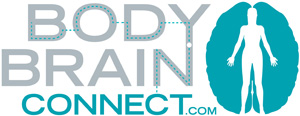What makes the mindful mover’s brain different?
While at the Pilates Method Alliance Conference 2014, Anne Bishop presented The Pilates Brain and Brain-based cues. She delved into what makes a mindful mover’s brain different from a mindless mover’s brain
Mindful movement is an intelligent movement practice where the student is required to be aware of her movements and corrects errors. For example learning proper form can be done in any movement practice –running, weight lifting, Pilates, Yoga or dance. The real question is, do you pay attention. Even more important are you seeking out teachers, mentors and coaches to push you to further your body awareness and hone your mindful mover skills?
When engaging in mindful movement multiple areas of the brain are utilized. If you are merely letting your thoughts run, you are most likely using your default mode network (DNM). The DNM is active when you allow your mind to wander. In contrast, when you focus on a goal the DNM is suppressed and the task-positive network (TNP) is activated. The TNP is crucial in adjusting bodily movements because it activates our motor planning networks. These motor planning areas are the key to correcting form and making conscious changes in our movement patterns.

The occipital lobe translates information from our eyes and transforms patterns into images. These images help students see what the teacher is demonstrating while at the same time helps the teacher correct mistakes in faulty movement patterns in their students.

In many mindful movement practices like yoga, dance and Pilates the teacher uses touch to direct students. The parietal lobe is responsible for mapping the touch. Additionally, the parietal lobe integrates many senses or teaching cues. For example, when a student is able to recall what the teacher is saying and at the same time feel the instructor’s guiding touch the parietal lobe is hard a work integrating these stimuli to one coherent response.

In mindful movement we use our senses and perceptions to inform our future actions, perfecting our movements for efficiency, strength and flexibility. The frontal lobe helps determine the movement goal, such as “Maintain your neck posture while lifting this heavy weight”. The premotor cortex creates a plan to do so and the motor cortex send the signals to the muscles to make it happen.
Art work created by Christine McMahon (C) 2014.
Interested in learning more?
Take a look at our 2015 Teaching Schedule.




